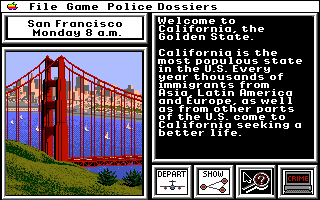ED695
April 2015
M.A. TESOL
Candidate: Leticia Cruz


Implementing CALL in Oral Language Profciency: It's Effects on Primary Level ESL students in a Guam Public School



Literature Review
-
Brief history of CALL
-
Types of CALL used for oral language proficiency
- Effects of CALL on students oral language proficiency


Brief History of CALL
- Developed over the years
- 3 phases: Behavioristic, Communicative, Integrative CALL
- Behavioristic (1960-70s)
- Traced back to the 1960s
- Confined to the universities
- Computer as a tutor
- Drill and practice


Brief History of CALL
- Communicative (1970-80s)
- Personal Computers became available
- More authentic communication
- Expanded the "tutor" idea
- Computer as a stimulus and tool
- Integrative
- Multimedia and Internet
- Personal Development
- Availability


Types of CALL for Oral Proficiency
- Computer courses, learning programs , computer games, learning and teaching software, web-based materials
- Integration of various language learning approaches



Types of CALL for Oral Proficiency
-
Listening
- Comprehension approach, Natural approach, Total Physical Response
- Krashen, Terrell
-
CALL for listening
- Interactive audio-picture lessons
- Songs and lyrics
- Listening labs
- TPR online
- English Interactive
- Websites for listening activities


Types of CALL for Oral Proficiency
-
Speaking
- Comprehensible output, audio-lingual method, Task-based approach, Communicative language teaching, Pronunciation approaches
- Swain, Bygate
-
CALL for speaking
- Language tutoring CD-ROMS
- Focus English
- Chats: video, chatrooms, conferencing, etc (ESL)
- Conversational English websites
- English sound websites
Effects of CALL on Oral Proficiency
- Teachers need to be knowledgeable
- Materials must be provided
- Applies to various learning styles
- Extend learning to different environments
- Effects attitudes of students
- Increases motivation
- Increase in oral language proficiency



Summary
- CALL has developed overtime and is continuing to
- CALL for oral profciency is available
- CALL has positive effects on oral language proficiency

References
Carr, N. T., Crocco, K., Eyring, J. L., & Gallego, J. C. (n.d.). Perceived Benefits of Technology Enhanced Language Learning in Beginnin
Language Classes. International Association for Language Learning Technology, 41(1). Retrieved from http://www.iallt.org/iallt_journal/perceived_benefits_of_technology_enhanced_language_learning_in_beginning_language_clas
Chang, M.-M., & Lehman, J. D. (2002). Learning Foreign Language Through An Interactive Mulimedia Program: An Experimental Study on the Effects of the Relevance Component of th ARCS Model. CALICO Journal, 20(1), 81-98. Retrieved from https://www.calico.org/html/article_402.pdf
Davies, G. (n.d.). CALL (Computer Assisted Language Learning). Retrieved from Centre for Languages, Linguistics & Area Studies: https://www.llas.ac.uk/resources/gpg/61
Department of Education and Skills. (2006). Unit 4: Speaking, Listening, Learning: Working with Childen Learning English as an Additional Language. In Excellence and Enjoyment: Learning and Teahing for Bilingual Children in the Primary Years. Primary National Strategy. Retrieved from http://www.naldic.org.uk/Resources/NALDIC/Teaching%20and%20Learning/pri_pubs_bichd_213506_021.pdf
Huneycutt, T. (2013, October 8). Technology In The Classroom: The Benefits of Blended Learning. Retrieved from National Math + Science Initiative: http://www.nms.org/blog/TabId/58/PostId/188/technology-in-the-classroom-the-benefits-of-blended-learning.aspx
Morales, N. E. (2014, May). Use of Computer Assisted Language Learning. Education and Human Development Master's Thesis. Retrieved from http://digitalcommons.brockport.edu/cgi/viewcontent.cgi?article=1398&context=ehd_theses
Noeth, R. J., & Boris B, V. (2004). Evaluating the Effectiveness of Technology in Our Schools. ACT. Retrieved from http://www.act.org/research/policymakers/pdf/school_tech.pdf
Shafaei, A. (2012). Computer Assisted Learning: A Helpful Approach in Learning English. Frontiers of Language and Teaching, 3. Retrieved from http://www.academia.edu/2365227/Computer_Assisted_Learning_A_Helpful_Approach_in_Learning_English
Shepherd, A. (2008, May 8). Speaking and Listening. TES Connect. Retrieved from https://www.tes.co.uk/article.aspx?storycode=2113584
Thank You
Chapter 2: Literature Review
By Leticia Cruz
Chapter 2: Literature Review
- 547


